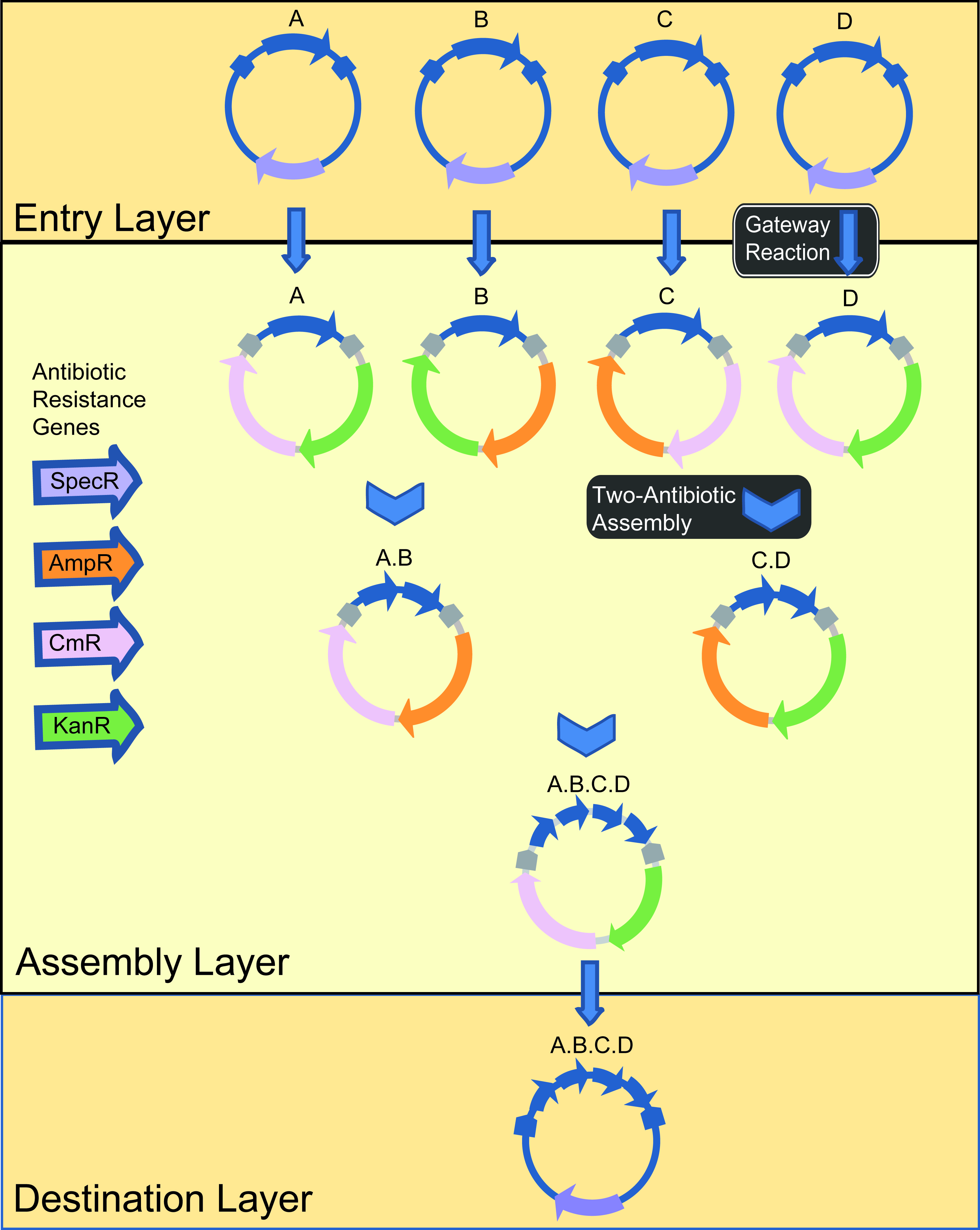Team:Berkeley Wetlab/Automation
From 2009.igem.org
Jennbrophy (Talk | contribs) (→Clotho and Liquid Handling Robot) |
Jennbrophy (Talk | contribs) (→Clotho and Liquid Handling Robot) |
||
| Line 59: | Line 59: | ||
<center>'''Assembly Tree'''</center> | <center>'''Assembly Tree'''</center> | ||
|} | |} | ||
| - | To build composite parts we use another Clotho tool built by the 2009 Berkeley Computational Team. This Clotho tool, named Kepler, generates a series of commands for a liquid handling robot based on an assembly tree it generated to build goal composite parts. Kepler will also output a series of human readable instructions that can guide researchers though the un-automated steps of the assembly protocol. By utilizing a combination of specialize software, liquid handling hardware, and newly developed chemistry, we were able to automate our composite part assembly process. | + | To build composite parts we use another Clotho tool built by the 2009 Berkeley Computational Team. This Clotho tool, named Kepler, generates a series of commands for a liquid handling robot based on an assembly tree it generated to build goal composite parts. Kepler will also output a series of human readable instructions that can guide researchers though the un-automated steps of the assembly protocol. By utilizing a combination of specialize software, liquid handling hardware, and newly developed chemistry, we were able to automate our composite part assembly process.<br> |
| + | <br> | ||
| + | <br> | ||
| + | <center>Image</center> | ||
==Success!== | ==Success!== | ||
Revision as of 02:11, 21 October 2009
Why Automate?
Our approach to characterizing cell surface display required us to make a lot of parts. Without an automated mode of assembly it would not be possible for us to make enough parts to characterize cell surface display using a combinatorial method.
Making Basic Parts
Making basic parts is the first step toward making any synthetic biology device. After designing all of the basic parts we needed for our cell surface display project, our team developed a method for doing cheap in-house gene synthesis. This method allowed us to easily make a very large number of basic parts.
oligoDesigner
We created a software called oligoDesigner to facilitate gene synthesis. OligoDesigner will take a list of goal part sequences as input and output all of the oligo nucleotides needed to synthesize the goal part. OligoDesigner will also output an IDT ([http://www.idtdna.com/Home/Home.aspx Integrated DNA Technologies]) order form that will order all of the oligo nucleotides it designed.
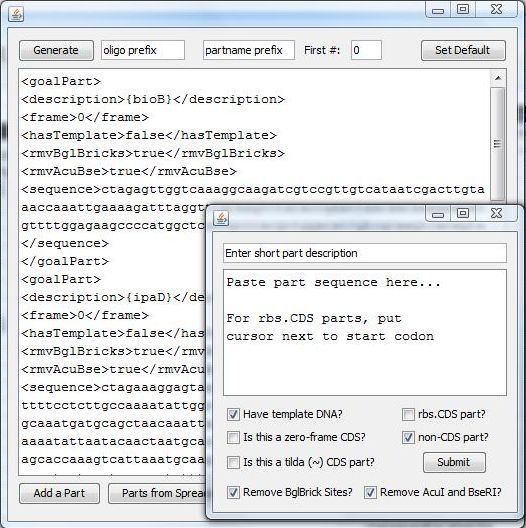 oligoDesigner | 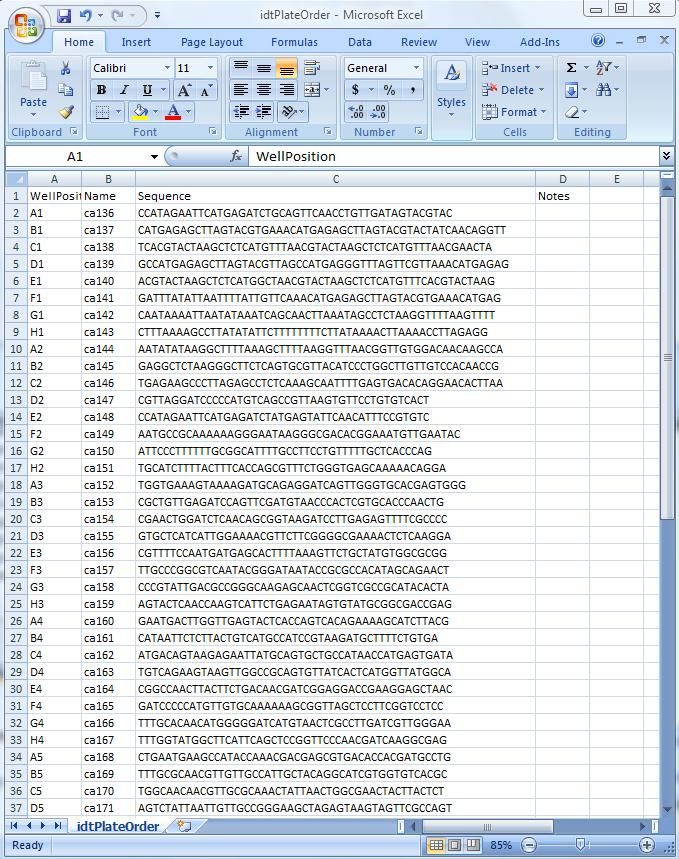 IDT Ordering Form | (IDT 96 well plate image) | 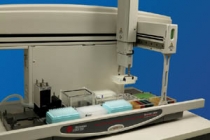 | 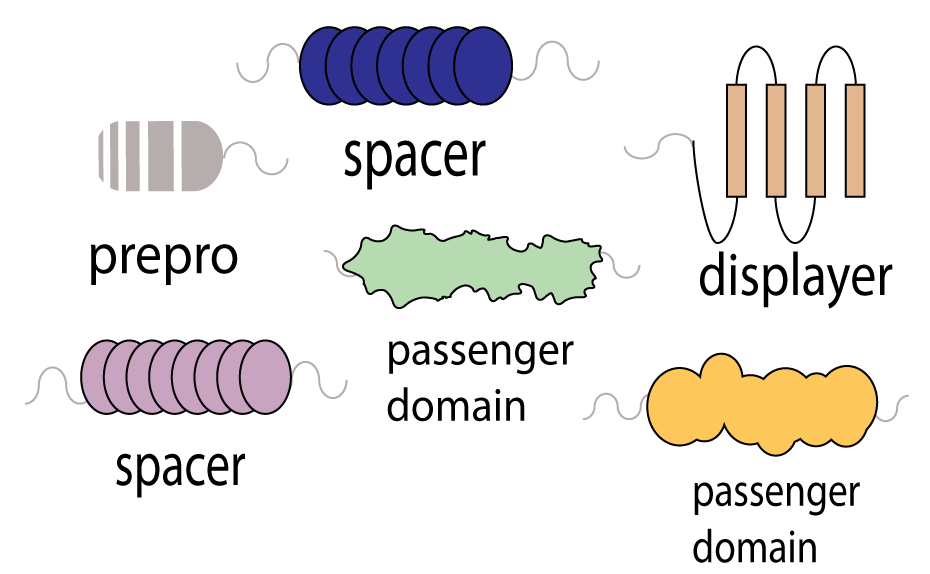 |
Oligo nucleotides arrive from IDT in a 96 well plate format. OligoDesigner will then generate commands for a liquid handling robot to resuspend the oligo nucleotides to the correct concentrations. It will also generate commands that tell the liquid handling robot how to mix the oligos in order to get the correct PCR products.
After the liquid handling robot finishes mixing oligo nucleotides, all we need to do to get our basic parts is add the correct buffers and enzymes and put the resultant tubes in a thermocycler for PCR.
Making Composite Parts
The next step, after making new basic parts, is to assemble those basic parts into composite part devices. There has been a lot of work being done at UC Berkeley to automate the process of composite part assembly. This year our team was able to implement many newly developed techniques to create a large number of composite parts.
2AB Layered Assembly
Our team used a method of basic part assembly called Two AntiBiotic (2AB) Assembly to create composite parts. 2AB assembly is a straight-forward and robust method for combining two or more basic parts into a destination vector. It is a layered assembly scheme used by the Anderson Lab at UC Berkeley. For more information about 2AB Assembly please visit the Layered Assembly page of the 2008 Berkeley iGEM wiki.
The 2AB assembly method lends itself well to automation because it consists mostly of liquid handling. Basic parts must be put into the correct specialized assembly vector, and then mixed with other basic parts in the correct order, to yield goal composite parts. The process of putting basic parts into the correct specialized assembly vectors is called "gateway". An in vivo gateway scheme amenable to high throughput was developed by the 2008 Berkeley iGEM team. This year we were able to use their in vivo gateway scheme to put our basic parts into the correct specialized assembly vectors. To read more about in vivo gateway visit the 2008 Berkeley iGEM wiki here.
Clotho and Liquid Handling Robot
2AB assembly utilizes six different types of specialized assembly vectors to make composite parts. In order to make composite parts in the least number of steps, an assembly tree, outlining the assembly process, must be generated. Assembly trees specify which specialized assembly vector to put basic parts in and specify the order in which composite part intermediates should be made. Generating assembly trees manually can be very difficult, especially when you need to make a large number of complicated parts. This year Berkeley's Computational Team built a plugin for Clotho (their software project) to help us make assembly trees. After generating assembly trees with Clotho and gateway-ing our parts into the correct vectors we can begin to build composite parts. To read more about Clotho please visit the 2009 Berkeley Computational Team wiki.
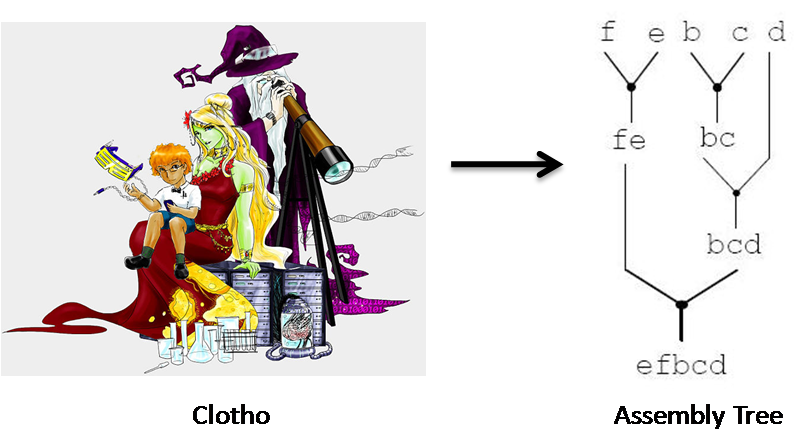 | 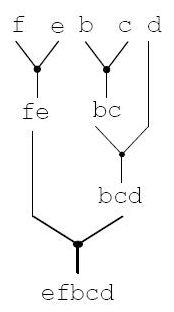 |
To build composite parts we use another Clotho tool built by the 2009 Berkeley Computational Team. This Clotho tool, named Kepler, generates a series of commands for a liquid handling robot based on an assembly tree it generated to build goal composite parts. Kepler will also output a series of human readable instructions that can guide researchers though the un-automated steps of the assembly protocol. By utilizing a combination of specialize software, liquid handling hardware, and newly developed chemistry, we were able to automate our composite part assembly process.
Success!
Using our newly developed automated assembly processes we were able to make over 800 parts (both basic and composite) in one summer! This magnitude of part making is unprecedented in iGEM competitions and enabled us to test a very large number of variations on cell surface display systems.
Success Rates
The assembly scheme we developed works just as well as assembly by hand and is much faster.
- percentages
- see Jenn Brophy and Gabriela Guzman's notebooks for notes on assembly.
- 2ab assembly
- Clotho
- statistics
We made a lot of parts with a robot.
 "
"








